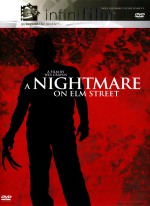If you’re looking for things to do in Toronto this weekend and want to check out some new Canadian horror films, head downtown to the Carlton Cinema (20 Carlton Street, Toronto, Ontario) where they’re hosting the Blood in the Snow Canadian Film Festival. With 9 feature films and 15 short films showing over three days, you just might find some hidden gems!
There will also be 10 horror-related vendors, including one by Fangoria Magazine, opening- and closing-night parties, and a seminar titled “Surviving the festival and distribution world.”
Maybe I’ll see you there!


